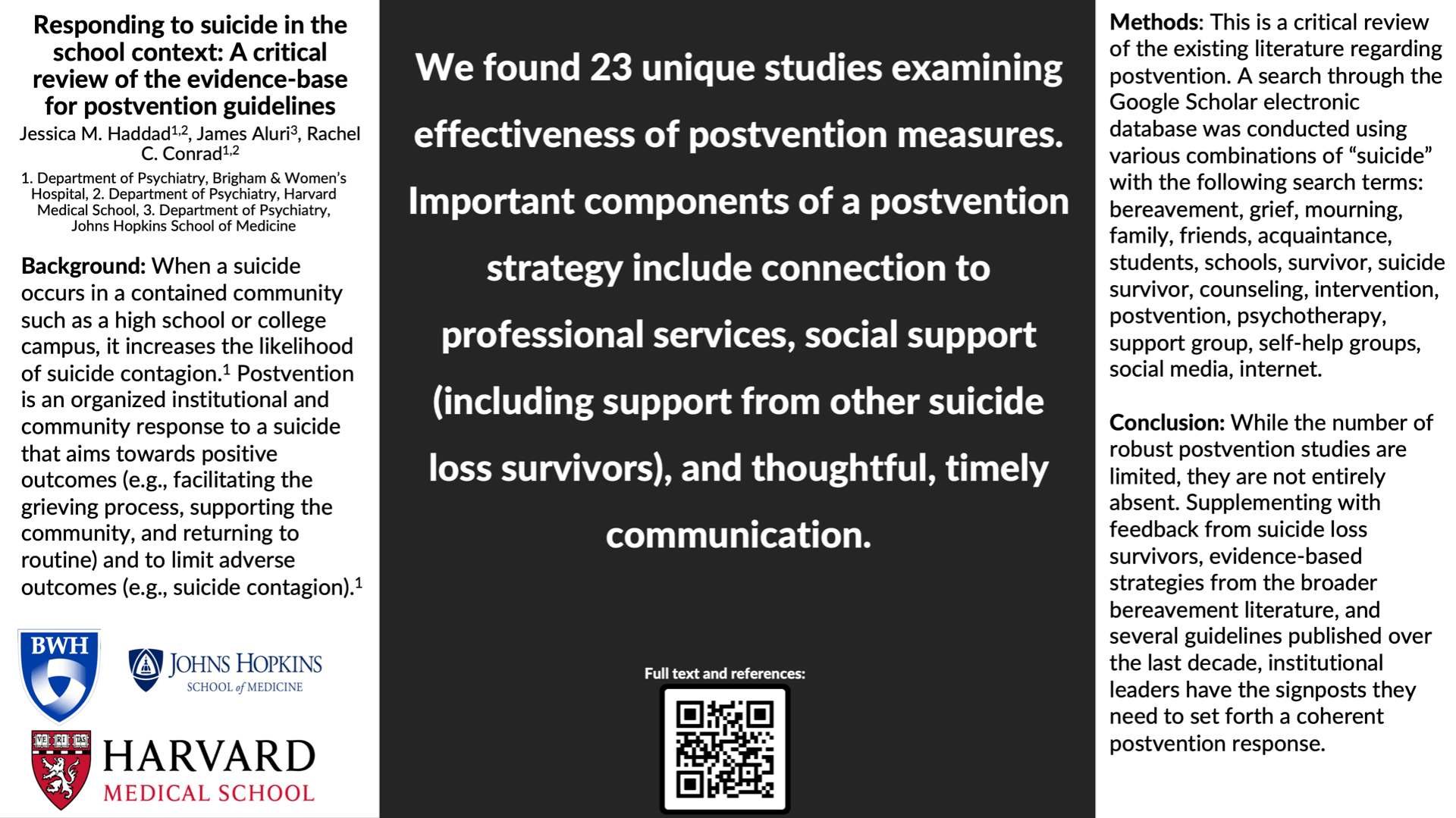Scientific Abstract
Background: When a suicide occurs in a contained community such as a high school or college campus, it increases the likelihood of suicide contagion.1 Postvention is an organized institutional and community response to a suicide that aims towards positive outcomes (e.g., facilitating the grieving process, supporting the community, and returning to routine) and to limit adverse outcomes (e.g., suicide contagion).1
Methods: This is a critical review of the existing literature regarding postvention. A search through the Google Scholar electronic database was conducted using various combinations of “suicide” with the following search terms: bereavement, grief, mourning, family, friends, acquaintance, students, schools, survivor, suicide survivor, counseling, intervention, postvention, psychotherapy, support group, self-help groups, social media, internet.
Results: We identified three systematic reviews on postvention measures2,3,4 that contained 23 unique studies examining effectiveness of postvention measures. Several studies had non-statistically significant findings or no improvement over a control group.5-8 The interventions in the six studies that showed improvement over a control group include an 8-week support group focused on grief;9 four 2-hour home visits to deliver psychoeducation on suicide, bereavement, and coping;10 ten weekly 1.5-hour group sessions for children and parents (placed in separate groups) focusing on psychoeducation, coping, and support;11 three community focused supportive interventions for youth in a church context including an open meeting, a psychoeducation session, and a memorial service;12 fourteen 1.5-hour support group sessions facilitated by clinicians;13 and a crisis intervention team providing outreach, support, and referrals to services.14
Conclusions: While the number of robust postvention studies are limited, they are not entirely absent. Supplementing with feedback from suicide loss survivors, evidence-based strategies from the broader bereavement literature, and several guidelines published over the last decade, institutional leaders have the signposts they need to set forth a coherent postvention response.
Search posters

